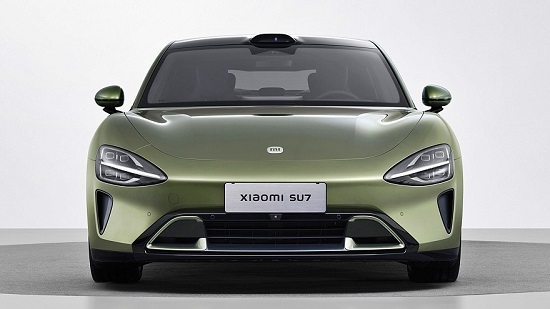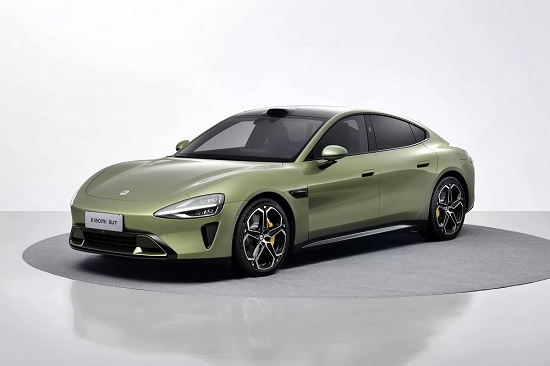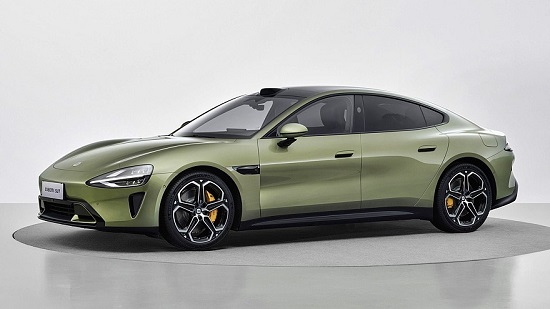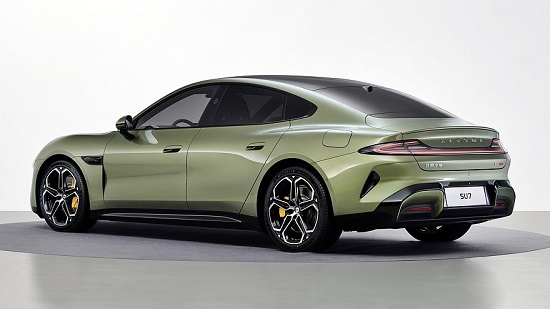
Xiaomi SU7 2024.
Xiaomi SU7 2024: details about the first electric car from the smartphone manufacturer.
Xiaomi founder and CEO Lei Jun personally held a technical presentation of the debut model of the company’s automotive division.
Lei Jun officially announced the creation of the automobile division at the end of March 2021, with investments in it amounting to at least 10 billion US dollars.
And now, after 1000 days, the first model is ready — the large premium electric sedan Xiaomi SU7, it will be produced on a contract basis by the Beijing plant of the BAIC auto concern, while the lion’s share of the hardware in this model was developed internally by Xiaomi.
Today’s presentation was devoted more to the technologies and components common to all future Xiaomi models, rather than to the Xiaomi SU7 sedan — it still has a separate presentation ahead with prices and options, and will enter the market in the first half of next year.
The modular platform on which the Xiaomi SU7 is built and which future Xiaomi models will receive is called Modena, it has a flexible electrical architecture — 400 or 800 volts, depending on the model version.
For this platform, Xiaomi has developed its own line of highly integrated power modules that combine an electric motor, gearbox, inverter and control unit.

The power modules are called HyperEngine V6 (299 hp, 400 Nm), HyperEngine V6s (374 hp, 500 Nm) and HyperEngine V8s (578 hp, 635 Nm), the letter “s” indicates 800- voltaic architecture.
The basic version of Xiaomi SU7 will have one electric motor on the rear axle with a power of 299 hp; such a sedan accelerates to the first “hundred” in 5.28 seconds, with a top speed of 210 km/h.
The battery capacity is 73.6 kWh, the range on one charge is 628-668 km according to the CLTC cycle, depending on the equipment.
In the all-wheel drive dual-motor version, the power of the front electric motor is 299 hp, the rear one is 374 hp, the maximum total power is 673 hp. The twin-engine sedan accelerates to 100 km/h in 2.78 s, to 200 km/h in 10.67 s, and top speed is 265 km/h.

The battery capacity is 101 kWh, the range on one charge is 750-800 km according to the CLTC cycle, depending on the equipment.
Future Xiaomi electric vehicles are promised more capacious batteries (132-150 kWh), made using CTB (Cell to Body) technology: the brick-shaped cells are packaged in a single case rather than in separate modules, which saves a lot of space.
Xiaomi SU7 has an adaptive, height-adjustable suspension, the front is on double wishbones, the rear is multi-link.
Powerful disc brakes are supplied by Brembo. Overall length of the sedan — 4997 mm, width — 1963 mm, height — 1440-1455 mm, wheelbase — 3000 mm.

The author of the design of the debut Xiaomi model is Li Tianyuan, who previously worked at BMW and oversaw the development of the iX electric crossover. The trunk lid of Xiaomi SU7 is equipped with a retractable spoiler.
In the production of the body, the now fashionable large-unit hot stamping is used, due to which high torsional rigidity is achieved — up to 51,000 Nm/deg (however, this value is indicated for the Modena platform as a whole, and not for the SU7 sedan).
Top versions of Xiaomi SU7 will have an overhead lidar, 3 radars, 11 high-resolution cameras and 12 ultrasonic radars.
All these artificial vision organs are needed to operate electronic driver assistants and full autopilot, which Xiaomi, like other Chinese automakers, hopes to someday launch into commercial operation.

The claimed drag coefficient cx of the sedan without lidar on the roof is 0.195.
The interior of the Xiaomi sedan is decorated extremely laconicly, if not modestly.
A 16.1-inch multimedia tablet with the Xiaomi HyperOS operating system is screwed to the center of the front panel; underneath it there is a row of physical keys for different purposes.
The instrument screen is only 7.1 inches diagonal, but the windshield has a luxurious 56-inch color augmented reality projection screen.
The volume of the main trunk is 517 liters, in front there is an additional trunk with a volume of 105 liters.
Xiaomi’s plans are Napoleonic: over the next 15-20 years, the company is going to enter the top five largest automakers in the world, that is, it is clear that Xiaomi electric cars will get out of China quite soon.


 Posted in
Posted in  Tags:
Tags: